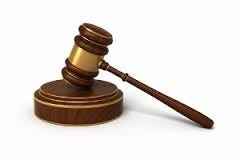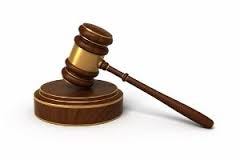Introduction to the role of the courts in re-establishing Indigenous legal rights in Canada
April 12, 2024
This series of Articles has been established as a contribution to the dialogue in Canada with respect to the rights and privileges of Canada’s indigenous peoples. The intent is to be part of efforts to expand the knowledge of Canadians regarding the history of the relationship between the colonists (newcomers) and the people who have inhabited this land from time immemorial. Ultimately Canadian society can be enriched and has the potential to evolve into the leading global example of an open, free and diverse democracy by learning from our indigenous people.
This is a journey we as Canadians have called Truth and Reconciliation. To travel along this path, we need to explore our more recent history, since Canada was created as a nation in 1867. It is a difficult path because it is marked by deliberate acts on the part of our governments to suppress indigenous culture. One of the key acts intended to essentially erase the presence of indigenous people was the Indian Act which unilaterally imposed many regulations for the purpose of managing and eliminating the “Indian problem”.
The Indian Act remains in force today, although it has been amended from time to time, it continues to be a source of contention between our indigenous people and the federal government. Notwithstanding, it still exists because the government has not been able to find a way to replace it with better legislation. Indigenous communities loathe the Indian Act but concede that in the absence of something better it can be leveraged as a source of their legal rights. If it were to be removed there is a fear that any special relationship between indigenous people and Canada would be extinguished, and indigenous culture would eventually disappear.
While wholesale changes to the Indian Act are desirable and necessary for the relationship between Canada and her indigenous populations to mature and flourish, the prospect of establishing a new vital arrangement remains elusive. Canada needs visionaries amongst the newcomers in consultation with indigenous leaders who can help forge a new relationship to the mutual benefit of all. In the meantime, we will need to rely on incremental improvements that take us down the path one step at a time.
Historically the Indian Act contained some provisions which were particularly egregious and can only be described as denying indigenous people of fundamental human rights. One of the most problematic parts of the Indian Act was Section 141 which prohibited, amongst other things, indigenous people from hiring a lawyer or funding a legal claim by an indigenous group. It read:
“Every person who… receives, obtains, solicits or requests from an Indian any payment or contribution or promise of any payment or contribution for the purpose of raising a fund or providing money for the prosecution of any claim which the tribe or band of Indians to which such Indian belongs…shall be guilty of an offence and liable to a penalty not exceeding two hundred dollars and not less than fifty dollars or to imprisonment for any term not exceeding two months.”
Section 141 was enacted in 1927 in response to movements such as the Nisga’a Land Committee and the Native Brotherhood of British Columbia. This amendment effectively barred Indigenous peoples’ ability to fight for their rights and prohibited Indigenous governments from exercising any real power in the political and legal systems. When Canada committed to the United Nations’ Universal Declaration of Human Rights in 1951, the government revised some sections of the Indian Act, including Section 141. The repeal precipitated a renaissance in Indigenous assertion of sovereignty and the related legal cases that continue to this day.
Tremendous gains in Indigenous rights have been achieved through the court system. We will, over the coming months, discuss some of the specific cases that represent milestones in the recognition and restoration of indigenous rights. These include cases such as:
R1. v. Sparrow in which the Court recognized that existing Aboriginal rights could include fishing for food, social, and ceremonial purposes.
R. v. Gladstone wherein the Court affirmed that in certain instances, where evidence warranted, Aboriginal peoples could claim rights to fish for commercial purposes.
Blueberry Indian Band v. Canada that recognized a fiduciary duty on the part of the government requiring it to make decisions in the best interests of Indigenous communities.
Delgamuukw v. British Columbia that defined Aboriginal title as a special right arising from prior occupation of the land by Indigenous people and affirmed Indigenous communities’ intimate relationship with the land.
R. v. Badger, R. v. Sundown, and R. v. Marshall (I and II) which lifted treaty rights above non-treaty uses of lands and resources to protect agreements negotiated by Indigenous peoples that are often over two hundred years old.
These and numerous other decisions have helped establish a body of law that has strengthened indigenous rights and claims. The court has proven to be a significant supporter of those rights. It is fundamental to the betterment of the relationship between Canada and its indigenous people to develop a legal framework and foundation that establishes a basis for adjudicating disputes. It is evident that the Court must continue to have a role in the furtherment of Indigenous Rights.
There is a potential danger however for an over reliance on the courts to establish the boundaries and to define how the relationship should work. Rather the maturation of the relationship requires active consultation and political recognition of Indigenous People as the original inhabitants and custodians of this land. Moreover, as the legal framework evolves, we must also recognize that the reference point cannot be exclusively the laws established by the governments of Canada (Federal and Provincial) or even International Law (relevant as it pertains to treaties between Nations) but must also relate to and evolve out of indigenous legal systems. Granted this may be a complex undertaking but it is essential to our growth.
Professor John Borrows of the University of Victoria faculty of law observed:
“Law in North America does not just orient our relationships to one another on a horizontal axis. It does much more than merely mediate individuals’ actions on an even plane. Law also has a vertical orientation that builds relationships hierarchically and thereby forges how we interact with one another […] In Canada, the law has often layered itself over pre-existing Indigenous legal landscapes, concealing this previous presence.”
The repeal of Section 141 has led to numerous claims being brought before the courts. While there have been significant advancements through the legal system in re-establishing and defining Indigenous rights, much work has yet to be undertaken. Improvements in conditions and the recognition of indigenous rights in Canada continue to be left wanting. The courts have limited time and capacity and unfortunately because our various governments continue to fail in acting in good faith through consultative processes, and this has led to overburdening the legal system as the avenue for resolving disputes.
R refers to Crown or Government of Canada




